Medanales, NM. I love a metaphor that the artist Makoto Fujimura uses. In his book Culture Care, he writes that in terms of our cultural life we are like trout swimming in polluted water, which is making us sick. The quality of our culture is, of course, too often gross and unwholesome, but the sheer amount of ugly stuff coming at us gives a sense of inundation. It surrounds us, as water does the fish, and if one does not make an effort to escape, the prevailing, toxic culture will continue to damage and warp us.
This leads Fujimura to extend his metaphor. Addressing his fellow artists, he says that in order to do good work and to serve the broader community, creative people must swim hard upstream, against the current, to find purer, healthier sources of inspiration. Only if they manage this feat will they be able to contribute to cultural renewal. For Fujimura, a committed Christian, Scripture is one crucial source, but he has also dedicated himself to learning traditional Japanese painting techniques, and that dedication is another source of inspiration for him.
As I say, I love this metaphor, and think it can be applied in two ways. One is the more abstract: Fujimura’s polluted water is our increasingly toxic culture and we must struggle against its current in order to free ourselves from its effects and find healthier inspirations. But we can also use the metaphor in a more literal way: Real water nourishes living creatures, and the natural world can provide us with inspiration of the sort Fujimura has in mind.
One place where water does this is just under our feet, if we stand by any healthy tree. In the soil that surrounds its roots one can find pure, though not quite clear, water. It will be a soup thin enough to penetrate the roots’ outer membranes, yet nourishing enough to build the tree. This liquid will be unique in its composition, depending on specific soil substrates and sources of organic content. If another tree has fallen nearby, it will yield certain compounds as it breaks down and those compounds enter the soil and dissolve in its water. It matters whether that fallen tree is a white oak or a red maple; each will yield a distinct chemical signature in its plume.
The resulting sub-surface liquid will nourish the tree’s cambium, which builds, year by year, the woody substance of the tree, accumulating in girth and grain. Here, should we be inclined to take it, the alchemy of growth provides us an opportunity for a fruitful encounter with nature through that essential cultural act: making something.
Perhaps a story can illustrate one way this metaphor might inspire human making. Years ago, in a relatively untended corner of their property, my parents had a decrepit fruit tree, a crabapple perhaps. It had come near ruin, a victim of age and strangulation by bittersweet vine. My parents thought it best to remove it, and since I was handy with a chainsaw, they asked for my help. So on an especially nice spring morning I stopped by to cut the tree down as they watched.
Once down, I began to cut off the tree’s limbs. Ordinarily, I would have reduced the whole tree to moveable pieces and dragged it all off to a brush pile where it would molder away. But in those days I was becoming interested in woodworking and was influenced by the craft of George Nakashima. Nakashima had a gift for perfectly matching specific pieces of wood to given uses, and his furniture always brought out the best in the wood’s natural features. So when it came time to dispatch the trunk of the tree, I cut it into pieces roughly 20-inches long, then cut those lengthwise to create rough slabs, about three inches thick.
At the time, I had no notion what to do with these pieces, and wouldn’t for years. But eventually a modest bit of inspiration came from them. This happened as my mind wandered during a workday meeting. As I doodled in the margin of my notebook, the random marks of my pen unexpectedly evolved into a plan for a little table that would use those slabs of wood.
This plan suited my woodworking skills at the time, which is to say that it was simple in design, with basic, chunky joinery, and no drawers, doors or other moving parts. But when it was done, the table served its function plenty well enough. Today it sits next to a comfortable chair and generally supports a book or two on top. Even better, the table reveals the wood itself to good effect, a unique piece of creation, expressed in grain and color, a record of the fantastically complex processes that brought it into existence.
My little table can also, like Proust’s madeleine, trigger a cascade of memories and associations: my parents and our family home, a lush spring morning, George Nakashima, a favorite spokeshave used in the work, and more. These connections might not matter much in the big picture, but they signify a good deal to me and those closest to me. A phrase from Dietrich von Hildebrand applies here. Remarking on the nature of work and practical affairs before industrialization, he spoke of the “penetration of life by culture.” (Come to think of it, the penetration of life by anti-culture might be a pretty good definition of modernity.)
I agree with Mr. Fujimura that our culture is in need of renewal. This renewal will likely be a big, perhaps epoch-making struggle. And yet, in that big project of renewing our culture, some of the telling efforts will be less grand and in any case must be made close to home. The essential resources are there.

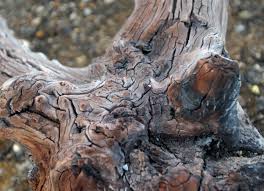
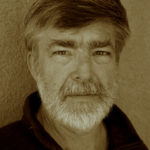
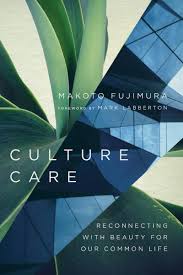

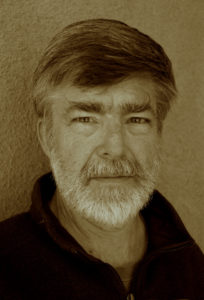

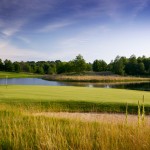
2 comments
Ed Hagenstein
Hello Rob G and thanks for the your comments. And thanks for remembering American Georgics and buying your copies. I find it hard to believe it came out ten years ago, too!
Rob G
Is American Georgics really ten years old? Amazing how fast time passes! I remembering buying two copies, one for myself and one for a friend, and it doesn’t seem all that long ago. Anyways, great little essay — most of us here already know of what you speak, but are in need of frequent reminders given the strong cultural pull in the opposite direction.
Comments are closed.